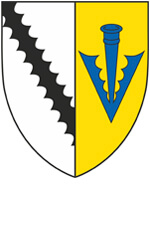Sidney Sussex College
Soon you will behold these dwellings rising in the midst,
Shining with their snow-white pinnacles and rosy walls:
A noble lady consecrated these to the learned muses,
A fortunate marriage, more fortunate in its great origin
The grafted offspring of the Sidney Sussex stem " Giles Fletcher the elder, De Literis Antiquae Britanniae (Cambridge, 1633), p. 16.

Sidney Sussex College was founded on 14 February 1596, as a ‘ good and godlie monument for the mainteynance of good learninge’i in accordance with the will of Lady Frances Sidney, Countess of Sussex (d. 1589). Although the youngest of the old Cambridge colleges, Sidney has acquired 121 manuscripts, ranging in date from a late 10th-century Ordinale to a 19th-century Torah scroll. There are several books from monastic libraries, most notably Bury, Croyland, Durham, Kingswood and Warden, and the Franciscan houses at Bristol, Worcester and York, and a significant group of liturgical manuscripts from the archdiocese of York. Post-medieval manuscripts include the sole surviving fragment of the Cromwellian House of Lords and a book of receipts compiled by Anne, Lady Fairfax.
Sidney possesses a fine collection of early printed books, including the library of the first Master, James Montagu (1568-1618), subsequently Bishop of Winchester, the non-theological books from the library of John, 2nd Lord Harington (d. 1614) and the Hebraica collected by Paul Micklethwaite (d. 1639). Among rarities are the only complete copy of the York Pica of 1509 and a special issue of the Czech translation of Calvin’s Institutio Christianae Religionis made for James I.
Sidney was not a well-endowed college, but the archives include important series of records relating to estates in Cleethorpes and Abbots Langley, the latter including court rolls from 1244 to 1857. Holdings of personal papers include those of Samuel Ward (Master 1610-43), David Thomson (Master 1957-70), and the physiologist G.R. Mines (1886-1914). The remodelling of the College by Wyatville is documented in an extensive series of architectural drawings.

